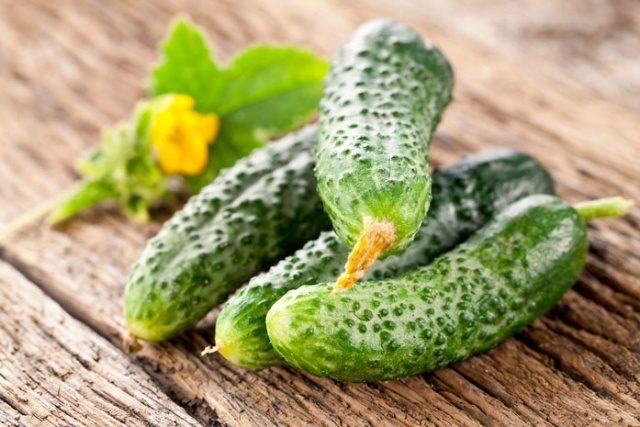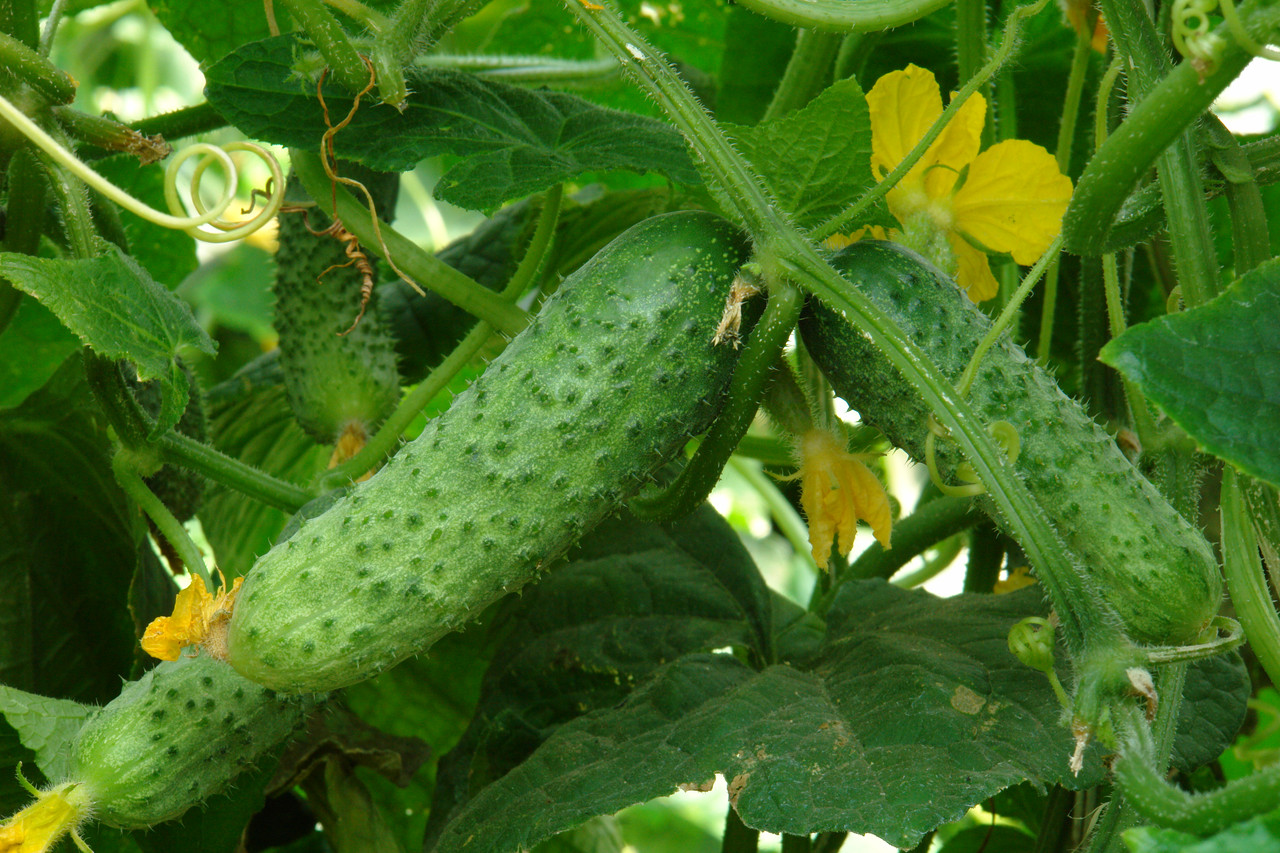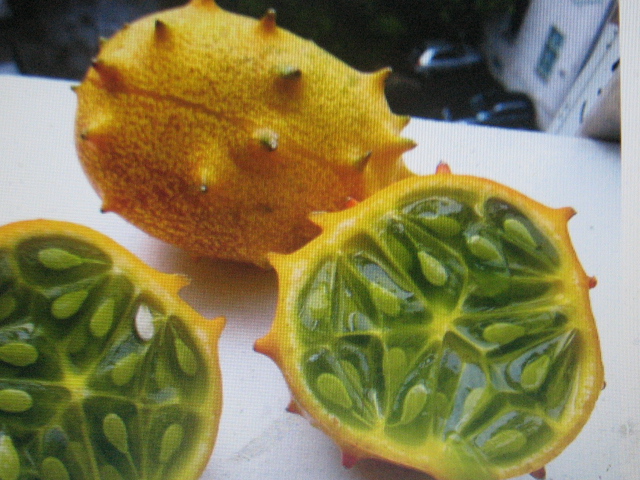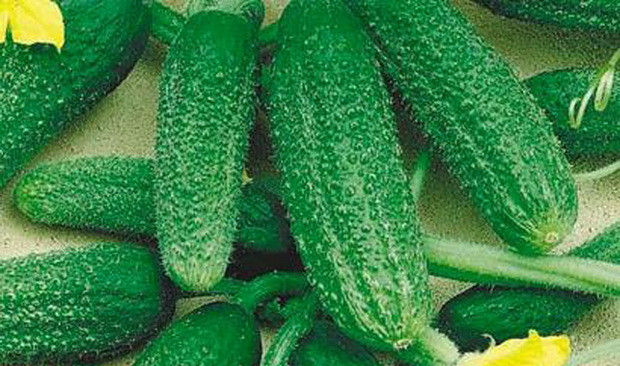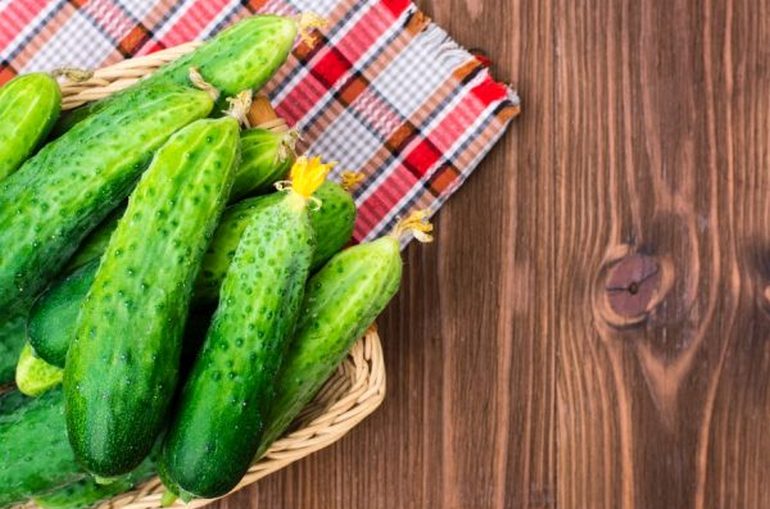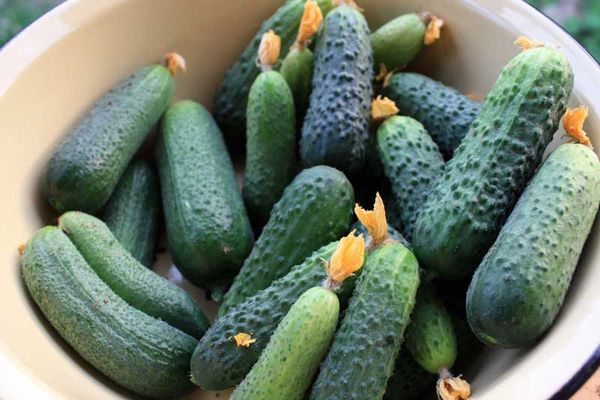Content:
Hybrid cucumber Parisian gherkin bred by the Poisk agrofirm in the city of Vereya. In 2006 it was included in the State Register and zoned for the Central and Central Black Earth regions.
Cucumber Parisian gherkin: characteristics and description of the variety
The bee-pollinated variety is intended for cultivation in open beds, as well as in greenhouses and greenhouses with unhindered access of pollinators. On average, it takes 40-45 days to ripen the fruits from the moment of sowing, which makes it possible to classify the hybrid as early maturing.
The compact shrub has large and medium leaves of a rich green color with a strongly serrated edge. Fruits are cylindrical straight (classic kornishon) with large tubercles and black thorns. There are no voids inside. Seedlings as they grow, form a bush with lashes of medium length. The plant loves watering, but it is also resistant to drought. According to the manufacturer's instructions, the seeds are resistant to diseases such as cladosporia and mosaic virus.
Features and technology of growing
The agricultural technique of growing cucumbers Parisian gherkin is in many ways similar to other varieties zoned for the Central Black Earth region. Hybrid seeds are sold in two forms of production: regular and glazed. Regular seeds are suitable for growing seedlings. The glaze contains growth activators and disinfectants, therefore such planting material is good for sowing in open ground, its germination rate is close to 100%.
Sowing
If it is decided to abandon the seedling method, the sowing dates are determined according to the following rules:
- For greenhouses - the first decade of May.
- For beds with polyethylene shelter - the second decade of May.
- On the field and in the beds without shelter, sowing is performed in the third decade of May.
You should not thicken the crop. It is considered optimal to place no more than 4 bushes per 1 m2. In greenhouses - even less: 3 bushes per 1 m2. Good precursors for the Parisian gherkin are tomatoes, potatoes and legumes. At the same time, it is advisable to add organic matter to the soil in the fall: humus, mullein or chicken droppings. The seeding depth is 2 cm.
Seedlings are sown in early April. Since the seeds are taken without glazing, before sowing, the planting material is soaked in weak (1%) solutions of potassium permanganate or salt. The container with the solution and seeds is placed in a warm place for a day. The floating seeds are thrown away.
Pots for future seedlings are taken with a diameter of 8 cm.
Put such pots on one common pallet. To get friendly and strong shoots, maintain a temperature of about + 22 ° C, and as soon as the first leaves appear above the ground, turn on the phytolamp. The optimal daylight hours are 10 hours.
Transfer
Seedlings are considered mature enough for transplanting if there are 3-4 true leaves on the shoots.However, you should not rush and immediately plant plants in the beds. Tempering is carried out for several days. In the afternoon, the trays with pots are taken out into the fresh air and left in partial shade for 3 hours. This will avoid wasting time for adaptation. Otherwise, the delicate leaves can get painful sunburn.
On the backyard plots, the beds must be equipped with trellises. The lashes are guided along the stretched cords.
Recommended planting pattern: 50 cm between rows and 30 cm between individual plants. If there are no trellises, then a checkerboard planting method is used, with a distance between plants of 60 cm.
Care
For watering the beds, choose the morning or evening hours. Watering at noon is strongly discouraged: splashing water on the leaves works like lenses, and the reflected sun rays cause burns. At the stage of forming bushes, watering is performed once every 3 days, and as soon as the first flowers appear, every other day.
In addition to regular weeding, the beds must be watered with fertilizer solutions. Superphosphate, urea and sulfate are mixed in equal proportions. 0.5 tablespoon is consumed per 1 m2. Top dressing is performed after germination or immediately after planting seedlings with an interval of 10 days until the first ovaries appear.
The lashes are regularly tied to trellises to form bushes. Usually the vines are simply guided, and they are fixed on their own with their antennae.
The resistance of the Parisian gherkin to diseases is usually enough so that no treatments with any reagents are required during the season. However, inspection must be carried out regularly, and if damaged leaves and whole lashes are found, they must be immediately removed and burned.
Harvesting
Cucumbers must be picked from the trellises every day. Otherwise, you can face a deterioration in the quality of subsequent fruits. Among the most common problems are the following (and how to fix them):
- Zelenets is pear-shaped. This indicates a lack of potassium. In such cases, ash is diluted in irrigation water and all the beds are irrigated evenly.
- The shape of the fruit resembles an hourglass. This suggests that the difference in daily temperatures was too large. At night, tapestries should be covered with foil.
- Arcuate cucumbers appear when watering was preceded by a too dry period.
- Lack of ovaries. Most often occurs due to insufficient pollination. Artificial pollination can be carried out. This is usually done in the morning.
Advantages and disadvantages of the variety
According to gardeners, the Parisian gherkin has the following advantages over other varieties of early cucumbers:
- High yield, which allows you to save on planting areas.
- Excellent taste of zelents.
- Early ripening.
- High yield of marketable products (over 85%).
- Excellent keeping quality and transportability.
- Drought tolerant.
- Disease resistance.
- The small size of the fruit is ideal for pickling.
Among the many early varieties of cucumbers, French gherkin is considered one of the best for those who can pay maximum attention to the beds. If the gardener does not have the opportunity to visit the planting every day, then you should opt for a different variety.
